Selection of portraits at this exhibition is occasional, and it is not based on museological standards. Among the Town Museum's paintings only those are presented that are in a relatively good condition, and there was no need for their conservation-restoration – unfortunately, among paintings of this exhibition there is not a single work of Mór Than. The famous painter was born in 1828 in Becej, and he became famous firstly thanks to his historic and regional paintings, however, he occasionally painted excellent portraits, too. Here we mention only more famous works of his in this genre: Portrait of Emperor Franz Joseph, portraits of Ferenc Liszt and Ferenc Deák, and a couple of very successful self-portraits. Considering his works in other towns of Serbia, in the Town Museum of Subotica there is the Portrait of Maria Theresa, in the Museum of Vojvodina the Portrait of Uknown Hungarian Magnate, in the Town Museum in Sombor the portrait of Queen Ilona, in the Gallery of Matica Srpska the Portrait of Száva Tököli. As far as religious paintings are concerned, Mór Than, apart from the churches of Becej, painted altar paintings for other Catholic churches all around Backa. In the Becej downtown church there is Assumption of Mary and Saint John with the Baby Jesus in his Arms, in the Catholic church of Becej uptown, Saint Anthony with Christ and the Assumption of Virgin Mary, in the graveyard chapel the Judgement Day and Saint Michael Archangel, in the Catholic church in Srbobran – Saint Thomas and All Saints, in Mali Idjos Saint Joseph with Christ.
Considering the aim and cause of the exhibition, it is important to pull out the portrait of Száva Tököli, who was a nobleman, a patriot and a generous donator, as well. The portrait is exhibited in the Gallery of Matica Srpska in Novi Sad. It is really representative and grandiose regarding its size (159 х 238 cm), it was painted in 1861 in Budapest, in those times when Mór Than did not live in Becej for a long while. The portrait was ordered for the anniversary of Száva Tököli`s birth, and since the political aim of the festive programs was the presentation of Hungarian-Serbian friendship, the Matica hired the painter, who was by that time quite famous, to paint the portrait. His involvement in the 1848-49 Hungarian Revolution as a painter-chronicler of many battles contributed to the selection of Mór Than for this assignment, but his biography was equally impressive: from 1852 he was the student of the Vienna Acedemy of Art, and later he studied at Karl Rahl's private school that was very popular among Serbian painters, too.
In the art collection of the Town Museum in Becej there are sixty portraits, which got into the collection in different ways – in most cases they were purchased from private owners or they were presents from citizens, but there were cases when they were taken over from other institutions which were not interested in museological activities. The oldest portraits originate from the beginning of the 19th century, while the newest ones from the 30's of the 20th century, not taking into account those that can be regarded as contemporary works. Although it did not yet happen, portraits may be classified into a separate unit within the museum's art collection for their characteristic theme and iconography or their natural connection to relatively famous people that are related to the history of Becej in many different ways.
Considering the relation of some paintings to the collection on the whole, the group of these paintings may seem chaotic and fragmented, which is not far away from the truth. From the historic point of view, that was a troubled and stormy period, for this reason – and regarding the topography of the creation of paintings – one cannot expect particular stability and artistic continuity regarding this branch of fine arts. Only by detailed analysis of the preserved sources and with the help of a few fortunate circumstances – in case that historic reality is in accordance with art historic reality – one could get a clearer picture of the relationship between the artists and the procurers, the historical background and the painting itself, or in the end, about all relations that are important in defining any painter's ars poetica.
Portraits were ordered by individuals who wanted to perpetuate themselves or someone among their closer relatives this way – there were, of course, exceptions in sociological, chronological or stylistic aspects. These citizens kept and "exhibited" the portraits at home, in such intimate surroundings that did not serve, and would not be adequate for showing the paintings to the wider public. There was another important sociological circumstance that contributed to the relatively large number of portraits. In the 19-20th century in Hungary – and Becej was part of Hungary till 1918 – the local political and other elite from time to time, on special occasions, ordered portraits of prominent contemporaries and famous citizens from the past, and these paintings were exhibited, according to a long tradition – in the building of the townhall as official portraits. In the 19th century, central aim of activities of institutions, associations and organizations – like territorial organizations, local parliaments and clubs – was that they saluted in front of local leaders by ordering their portraits, then exhibiting the paintings in representative rooms of local administration, mainly in halls for official receptions. This practice served for showing respect and thankfulness towards persons living in the given era or much earlier, who were considered to be virtuous enough to receive such an honor. Often these persons stood outside the local community , they were still respected for their activities in national movements in the 19th century, and the procurers this way acknowledged their own political views, too. Paintings on the walls did not serve only for decoration – these portrait galleries had the role to introduce the local community; moreover, the newest portraits were presented in a festive way. These representative portraits can be sorted into two groups: in the first group, there are portraits that present an individual of great power, like portraits of emperors or their family members, as pieces of work that personalize owners of absolute power, while in the other group, there are portraits of local leaders, excellencies and noblemen.
Wherever they were, in whoever's ownership and whatever historical fate they got, the smaller part of the portraits got into the museum's collection, and this phenomenon is an example what kind of fate movable pieces of art have all around the world. It is an important fact, when speaking about this special genre and the collected material in the museum's chronologically sorted exhibition material , that in the middle of the 60's of the last century, ten years after its foundation, there was a significant change in the profile and structure of the artistic gallery, when a collection of paintings got typically museological characteristics. Then started the collection and preservation of old artistic pieces of work, mostly the collection of work of those painters that were somehow related to Becej, or the theme of the painting allowed some kind of museological classification. Mostly in the 60's and 70's of the last century, but even till recently, more pieces of art of old painters got into the museum's collection, among them quite a lot of portraits, mainly from the 19th century and the first half of the 20th century. Paintings of this genre were gifts from citizens of Becej and its surroundings, but it happened mor often that the museum purchased the paintings from descendants, who after a certain period of time, having material troubles or for other reasons, did not feel stronger emotional connection to the persons on the portraits, so they did not have any reason to keep them in their homes any longer. Most of the portraits are exhibited for the first time.
mgr. Radoslav Mihailović,
art historian, museum curator
April, 2013
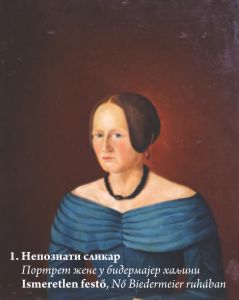

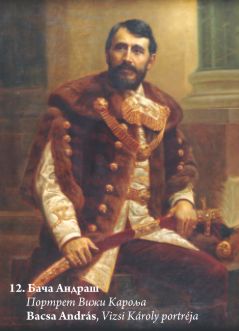
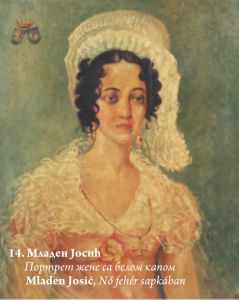
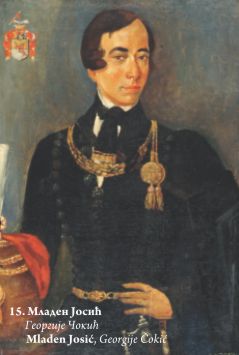
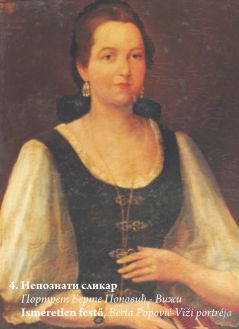
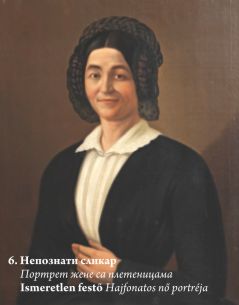
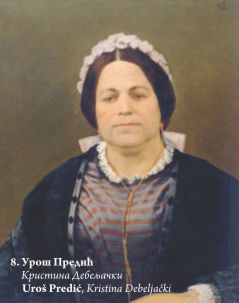
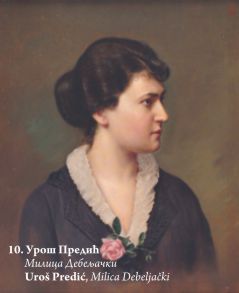
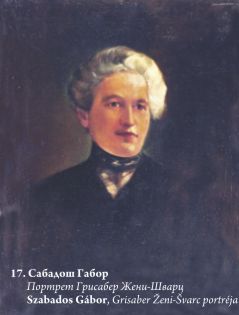
| 1. | Unknown painter (Nikola Aleksić?), |
| Woman in Biedermeier Dress, around 1830, | |
| oil tin-plate, 46,5 х 37 cm, | |
| Town Museum, Becej, No. 444. |
| 2. | Milutin Bedričić, |
| Portrait of an Orthodox Priest, first half of the 19th century, | |
| oil canvas, 67 х 55 cm, | |
| Town Museum, Becej, No. 513. |
| 3. | Jozefina Barbier, |
| Portrait of Marija Stakić, 1851, | |
| oil canvas, 67 х 55 cm, | |
| Town Museum, Becej, No. 513. |
| 4. | Unknown painter, |
| Portrait of Berta Popović-Viži, 1860, | |
| oil canvas, 77 х 60 cm, | |
| Town Museum, Becej, No. 416. |
| 5. | Franjo Grifinger, |
| Self-Portrait (?), second half of 19th century, | |
| oil canvas, 74 х 55 cm, | |
| Town Museum, Becej, No. 463. |
| 6. | Unknown painter, |
| Portrait of a Woman with Plait, 19th century, | |
| oil canvas, 68 х 55 cm, | |
| Town Museum, Becej, No. 506. |
| 7. | Toša Tatić, |
| Portrait of Marija Nestorov, 1889, | |
| oil canvas, 67 х 54 cm, | |
| Town Museum, Becej, No. 887. |
| 8. | Uroš Predić, |
| Kristina Debeljački, 1894, | |
| oil canvas, 71 х 55 cm, | |
| Town Museum, Becej, No. 483. |
| 9. | Uroš Predić, |
| Isidor Debeljački, 1900, | |
| oil canvas, 60 х 50 cm, | |
| Town Museum, Becej, No. 484. |
| 10. | Uroš Predić, |
| Milica Debeljački, 1900, | |
| oil canvas, 60 х 55 cm, | |
| Town Museum, Becej, No. 485. |
| 11. | Gábor Szabados, |
| Portrait of "Gábor Gombos" (?), 1912, | |
| oil canvas, 138 х 81 cm, | |
| Town Museum, Becej, No. 482. |
| 12. | András Bacsa, |
| Portrait of Károly Vizsi, 1913, | |
| oil canvas, 135 х 96 cm, | |
| Town Museum, Becej, No. 422. |
| 13. | József Pehán, |
| Portrait of a Man ( Nándor Gerber Jr.?), 1913, | |
| oil canvas, 80 х 65 cm, | |
| Town Museum, Becej, No. 408. |
| 14. | Mladen Josić, |
| Woman with White Cap, 1920, | |
| oil canvas, 76,5 х 62,5 cm, | |
| Town Museum, Becej, No. 415. |
| 15. | Mladen Josić, |
| Georgije Čokić, 1920, | |
| oil canvas, 97 х 67 cm, | |
| Town Museum, Becej, No. 423. |
| 16. | Evgenija Čarikova, |
| Portrait of dr. Miloš Vlahović, 1922-23, | |
| pastell, 56 х 41 cm, | |
| Town Museum, Becej, No. 583. |
| 17. | Gábor Szabados, |
| Portrait of Grisaber Ženi-Švarc, 1935, | |
| oil canvas, 80 х 60 cm, | |
| Town Museum, Becej, No. 492. |
| 18. | Gábor Szabados, |
| Portrait of Josip Švarc, 1935, | |
| oil canvas, 80 х 60 cm, | |
| Town Museum, Becej, No. 491. |

